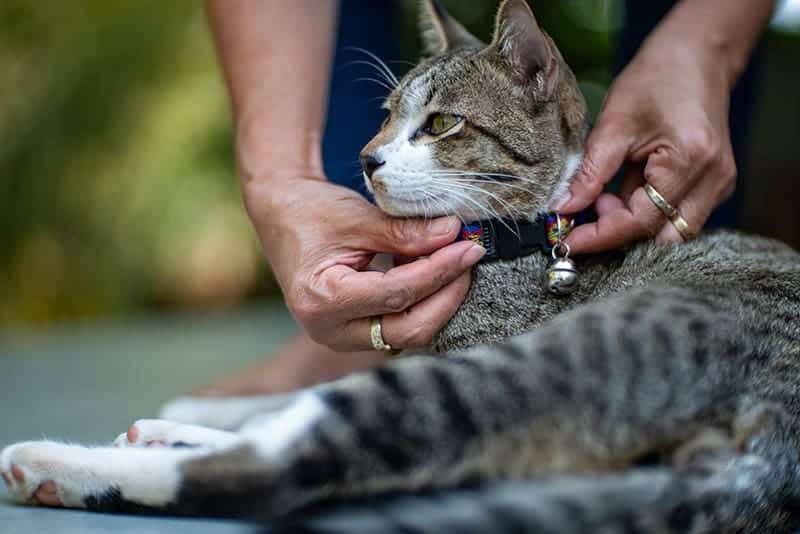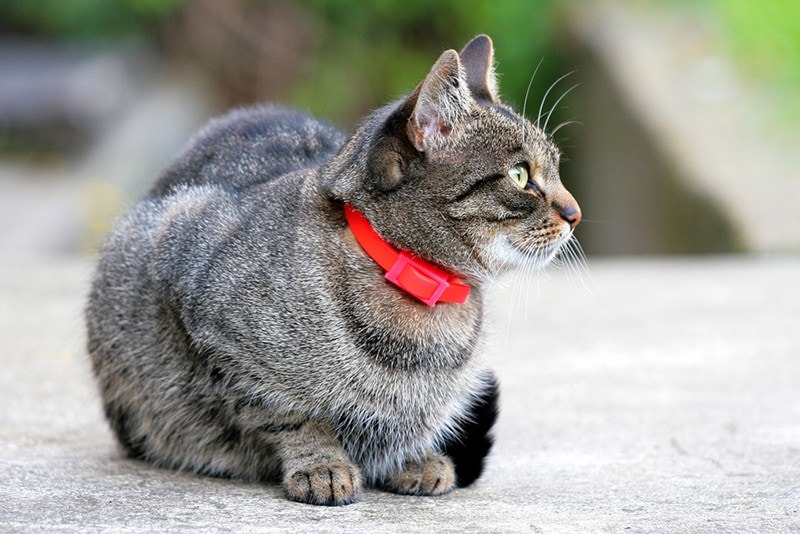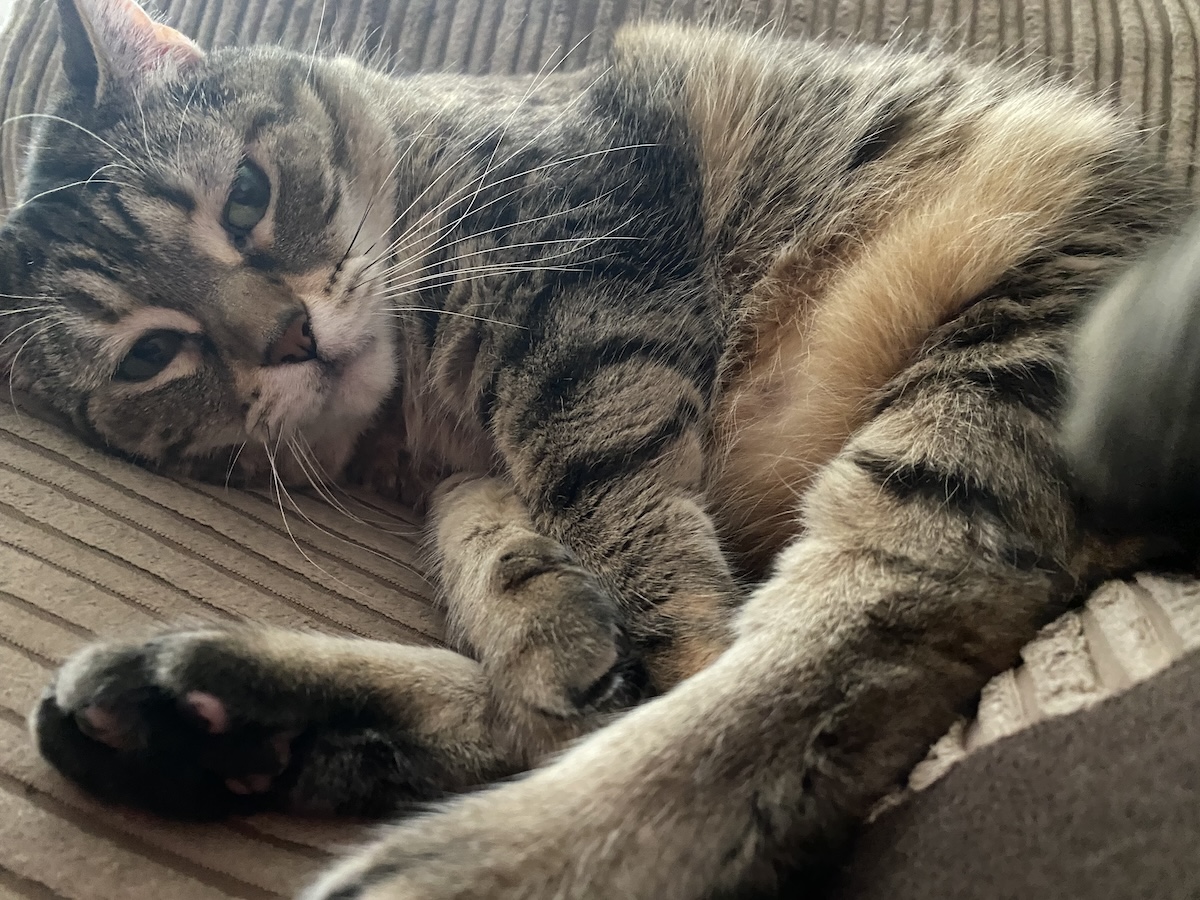Getting your cat into a collar doesn’t have to be traumatic for you or your pet, and outfitting your cat with the proper collar is essential to maintaining their health and safety. A well-fitting collar with identifying information, including your contact details, increases the chance that your pet will be quickly returned if they escape and end up lost and far from home.
But before you can start getting your cat used to wearing a collar, you’ll need to determine what type best fits your pet’s needs. The brand that you choose should have a breakaway closure to ensure that your cat can escape safely if they get caught on something. Here are a few tips for selecting a suitable collar, followed by step-by-step instructions for putting it on!
Preliminaries
Let’s discuss why cats need collars and provide tips on selecting the right one for your pet.
Why Do Cats Need Collars?
Safety is the primary reason cats need collars. Attaching an ID tag with your pet’s name and contact information to a collar is the easiest way to ensure your cat is easy to identify in an emergency—this is true for indoor and outdoor cats, since indoor kitties can also escape.
You can also attach vaccination tags, which can be incredibly important if an outdoor cat gets into a fight. If your cat doesn’t like tags dangling around their neck, there are personalized choices you can order with your pet’s name and your contact information engraved or printed right on the collar.
What Should You Look For in a Collar?
Most cat collars come in one standard size that’s usually more than roomy enough for even the largest animals. Kittens require their own pint-sized options. Products with a breakaway closure are invaluable. They break open when subjected to enough pressure, which prevents cats from being immobilized or injured if the collar gets stuck on something.
It would be best to avoid elastic designs, as cats can easily slip a paw through the collar and end up immobilized, preventing them from escaping and potentially making them vulnerable to predators.
Flea protection is essential for both indoor and outdoor cats. Owners have several products to choose from when it comes to flea treatments, including medications and flea collars. A flea collar provides a decent alternative if your cat has trouble with topical or oral medications. Some brands are effective against fleas and ticks and can be effective for as long as 8 months.
Finding the right cat collar can be tricky with so many options on the market. Our favorite is the Hepper Breakaway Collar, a durable hemp collar with adjustable slip-locks, a reliable quick-release buckle, and an included jingle bell to keep your local wildlife safe. This collar is stylish and practical, perfect for any cat!
At Catster, we’ve admired Hepper for many years and decided to take a controlling ownership interest so that we could benefit from the outstanding designs of this cool cat company!
After you’ve purchased a collar, it’s time to attach it to your pet. Read on for step-by-step instructions on how to put a collar on your cat.
How to Put On a Cat Collar
1. Let Your Cat Investigate the Collar
Wait until your cat is sitting somewhere comfortable. Take the collar out of the package, and place it close to your pet. Cats love investigating the world with their paws, noses, and mouths. Let your cat explore their new collar however they see fit. Give them plenty of time to get used to the smell and texture of the collar.
If there’s no rush, consider leaving the collar for a few days in a place your cat enjoys hanging out to allow it to soak up some of your cat’s scent—it’ll smell less foreign to your pet once they start wearing it. Rub the collar in a bit of catnip before giving it to your cat to explore. They’ll begin associating the collar with the mellow sensation of a good catnip high.
2. Put the Collar on Your Cat
Pick the right time to put the collar on your cat. Some owners find it easier to wait until their cat is eating, using dinnertime as a tasty distraction. Others wait until their cat is relaxed and lying around. Once you’ve picked a place and time for the adventure, loop the collar around your pet’s neck, and engage the fastener.
Make sure you select an option with a breakaway closure to ensure your cat doesn’t get seriously injured if the collar snags on something. Fastening breakaway closures doesn’t require much effort; put the two end pieces together, click, and you’re done.
Cats often attempt to remove collars using their paws. If your cat can escape from the collar, adjust the length and try again. Most cats get used to wearing collars relatively quickly.

3. Ensure the Collar Isn’t Too Tight or Too Loose
To ensure the collar isn’t too tight or loose, gently slip one or two fingers under the fastened collar while your cat’s wearing it. There should be enough room for your fingers to pass easily underneath.
Most collars come with sliders that allow you to adjust the length. If the collar’s fit needs tweaking, remove it before attempting to make any adjustments. Otherwise, you may put too much pressure on your cat’s neck. Adjust the collar’s length up or down in ½-inch increments to get the fit right.
4. Check the Fit Periodically
Make a habit of regularly checking the collar’s fit. Consider including it as a part of your cat’s regular grooming routine. Because kittens are growing, they need relatively frequent collar adjustments. Kittens’ collars should be checked and adjusted at least once weekly. If a cat gains or loses weight, it can alter the fit of their collar, making it too tight for comfort or too loose for safety.
Final Thoughts
Putting a collar on your cat doesn’t have to be complicated—just slip it around your cat’s neck and fasten it! Give your pet time to get used to the collar to ease the transition. Don’t forget to look for products with breakaway fasteners and reflective strips to keep your pet safe outdoors.
Collars with too much room snag easily, and those that are too snug can be uncomfortable and cause skin irritation, often resulting in fur loss. Remember to regularly check your cat’s collar sizing, as you may need to tweak things if your pet gains or loses weight.
Featured Image Credit: Daniel Rajszczak, Shutterstock












